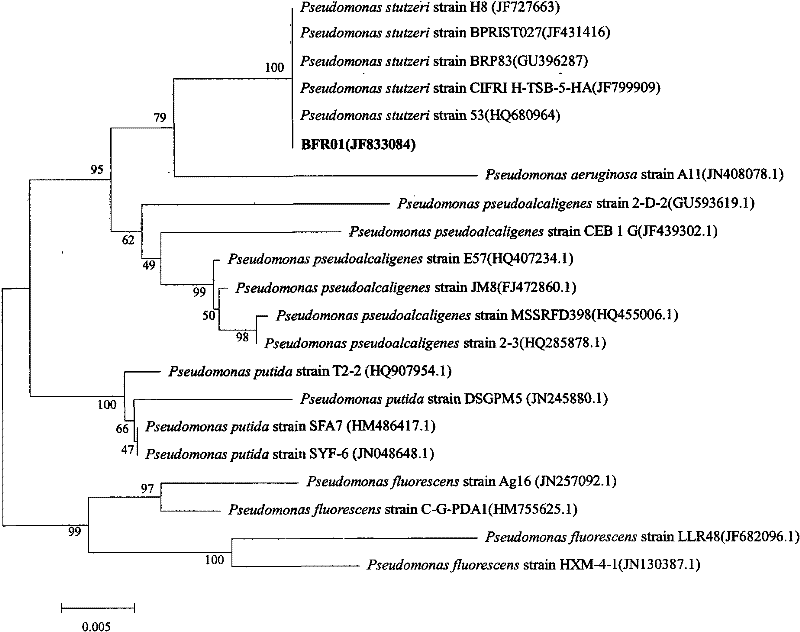Efficient degradation bacteria for PBDEs (polybrominated diphenyl ethers) and application thereof
A technology of polybrominated diphenyl ethers and degrading bacteria, applied in the field of biological treatment of environmental pollutants
- Summary
- Abstract
- Description
- Claims
- Application Information
AI Technical Summary
Problems solved by technology
Method used
Image
Examples
Embodiment 1
[0016]Inoculate the prepared bacterial agent in the inorganic salt medium containing PBDEs (BDE-47, BDE-99, BDE-100, BDE-153, BDE-154, BDE-183, BDE-209), and the PBDEs in the medium The concentration was controlled in the range of 20-100 μg / L, and the culture was shaken at 150 r / min and 30° C. in the dark. After 14 days, the degradation efficiency was shown in Table 1.
[0017] The degradation efficiency of PBDEs in the culture medium of table 1
[0018]
Embodiment 2
[0019] Embodiment 2: the degradation of PBDEs in the waste water
[0020] The wastewater from a sewage treatment plant has a pH of 5.3 to 8.6, and the types and concentrations of PBDEs are shown in Table 2. Add the bacteria agent of degrading bacteria BFR01 (10 6 ~10 8 CFU / mL), placed at room temperature and cultured in the dark for 10 days, and the residual amount of PBDE was determined. The experimental results are shown in Table 2.
[0021] Table 2 Degradation efficiency of PBDEs in sewage treatment plant wastewater
[0022]
Embodiment 3
[0023] Embodiment 3: the degradation of PBDEs in soil
[0024] The pH value of a PBDEs-contaminated soil is 4.0-10.0, and the types and contents of PBDEs are shown in Table 3. Add 1.0mL of bacterial agent per gram of soil, and the bacterial density in the soil is controlled at 10 6 ~10 8 CFU / g. After 10 days, the content of PBDEs was determined, and the experimental results are shown in Table 3.
[0025] Table 3 Degradation efficiency of PBDEs in soil
[0026]
PUM
 Login to View More
Login to View More Abstract
Description
Claims
Application Information
 Login to View More
Login to View More - R&D
- Intellectual Property
- Life Sciences
- Materials
- Tech Scout
- Unparalleled Data Quality
- Higher Quality Content
- 60% Fewer Hallucinations
Browse by: Latest US Patents, China's latest patents, Technical Efficacy Thesaurus, Application Domain, Technology Topic, Popular Technical Reports.
© 2025 PatSnap. All rights reserved.Legal|Privacy policy|Modern Slavery Act Transparency Statement|Sitemap|About US| Contact US: help@patsnap.com



